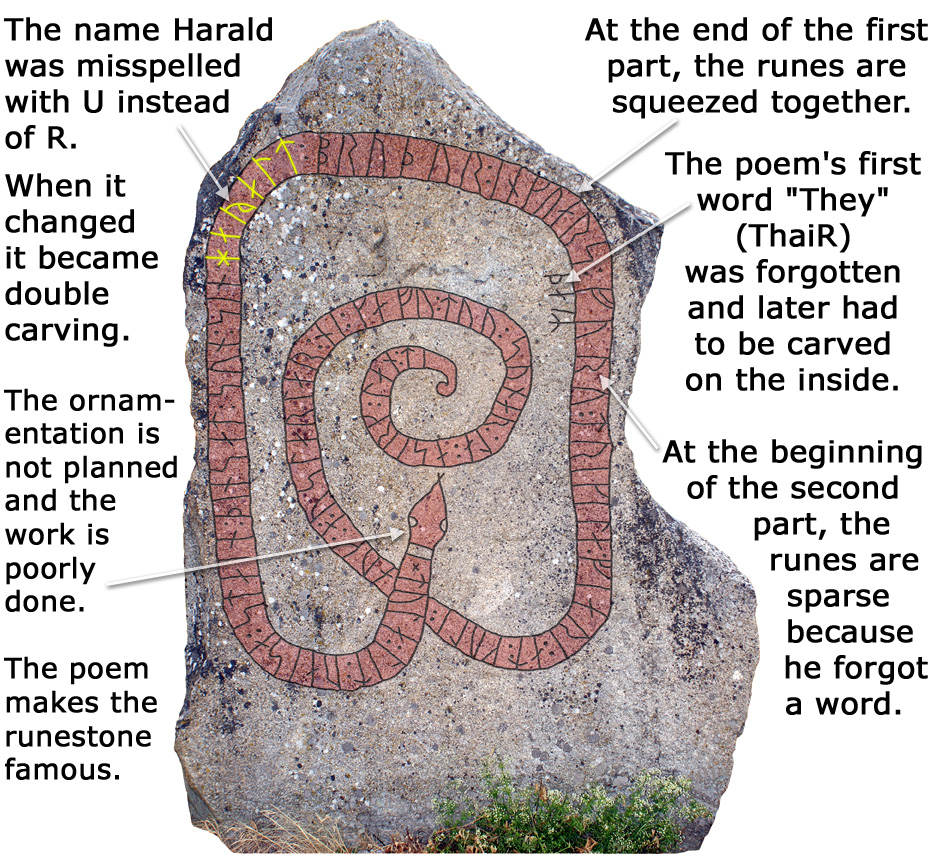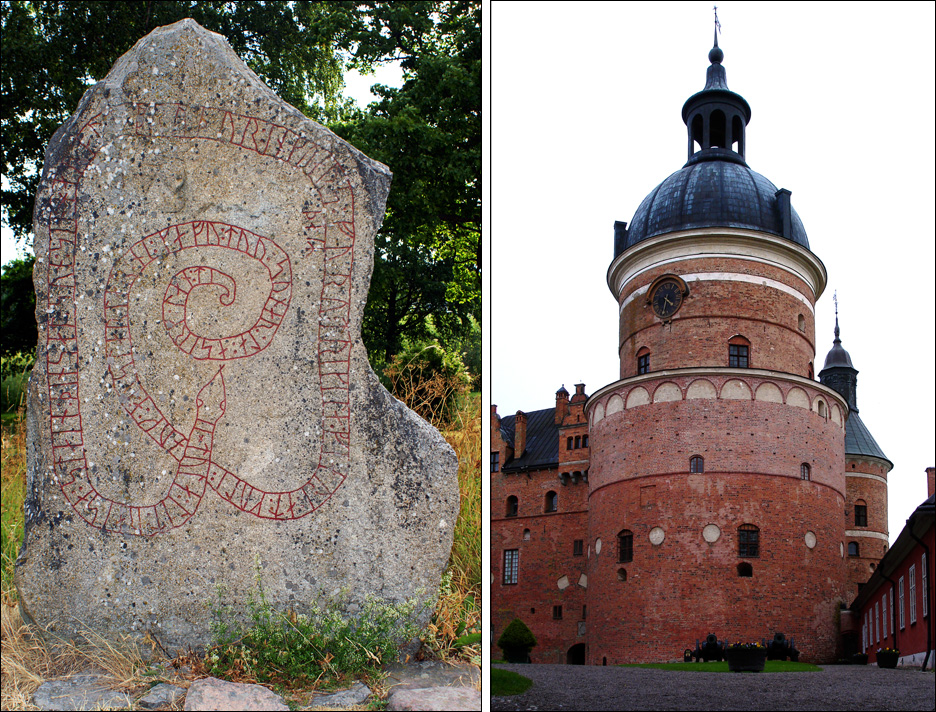
Runic inscription
Swedish
Tula lät resa sten
denna åt
son sin Harald, broder Ingvars.
De for manligen, fjärran
efter guld
och österut, gav örnen föda.
De dog söderut, i Särkland
English
Tóla had this stone raised in memory of her son Haraldr,
Ingvarr's brother.
They travelled valiantly far for gold, and in the east gave
(food) to the eagle. (They) died in the south in Serkland.
× tula : lit : raisa :
stain : þinsa| |at : sun : sin : haralt : bruþur : inkuars
: þaiR furu : trikila :
fiari : at : kuli : auk : a:ustarla| |ar:ni : kafu : tuu :
sunar:la : a sirk:lan:ti
History:
Ingvar's military journey to the east
Ingvar, or Ingvar the well-travelled, led a
Viking raid eastward in the years 1036-1041. Through
the rivers of today's Russia and Ukraine, Ingvar and his
warriors made their way down to the Black Sea and also the
Caspian Sea.
The purpose of the trip was to open up
the old and important trade route to e.g. Constantinople
(Istanbul to day) which for many years has been occupied by
other ethnic groups.
The trip failed and pretty much
everyone died on the trip. In the years after the disaster,
over 25 runestones were erected around Lake Mälardalen in
memory of those who died and did not come home.
The Rune Carver's Work:
A typical ornamentation for Ingvar's
runestones with snake and head seen from above. On this
runestone, the work is sloppily executed and the cutting
marks are uneven. The motif is not well thought out and
lacks both form and balance.
Whoever carved this runestone probably didn't
like their job. It is clear that he wanted to finish as soon
as possible!
If I were to guess who carved the runestone,
it would be the dead Harald's youngest brother. I think
mother Tula forced him to do the work with the words:
- This summer you don't do anything else
until you finish carving your big brother's runestone...
The second part of the runic inscription is
poetic and written by a poet but carved by the runecarver.
If mother Tula wasn't a poet herself, she probably got it
from one of Harald's friends or paid a poet for the work.

Links
Södermanlands
runinskrifter > Page 153
Lots of good information. (Swedish).
Runor > - Riksantikvarieämbetet
Map and runic inscription.
Google map >
Find the runestone
Contact:
kalle@runristare.se
If you want to be of help or have a question.
All runestones in the
Runestone Park
We start from the north and go clockwise
U 11 - Adelsö, Hovgården
The King's Runestone in Hovgården, Adelsö
U 3 - Hovgården, Alsnöhus
Found during an excavation in 1916
U 1 - Adelsö church
Former threshold stone to the sacristy. Now built
into the wall in the sacristy.
U 2 - Adelsö
church
Destroyed by fire around 1660. Former threshold stone
to the church.
U 10 - Dalby Adelsö
Found in 1920 at Stora Dalby, northern Adelsö. Now
built into the wall of the sacristy, Adelsö church.
U 6 - Björkö village on Birka
Several fragments as a puzzle. Now in the museum at
Birka.
U 5b - Birka
2015
(New find 2015)
2024.03.10 Not yet documented or published.
Sö 141b
- Aspa bridge (Sö Fv1948;289)
New find in 1937 with the name Svitjod (Sweden).
Sö 179
- The Gripsholm runestone
Mariefred, the most famous of the Ingvars runestones.
U 887 - Skillsta runestone
One of the world's most beautiful runestones.
Vs 29 - Sala parish church
The runecarver Livsten's masterpiece.
U 1125
- The old man in Krogsta
1500 year old rune stone carved with the older runes,
the Old Norse runes.
|





